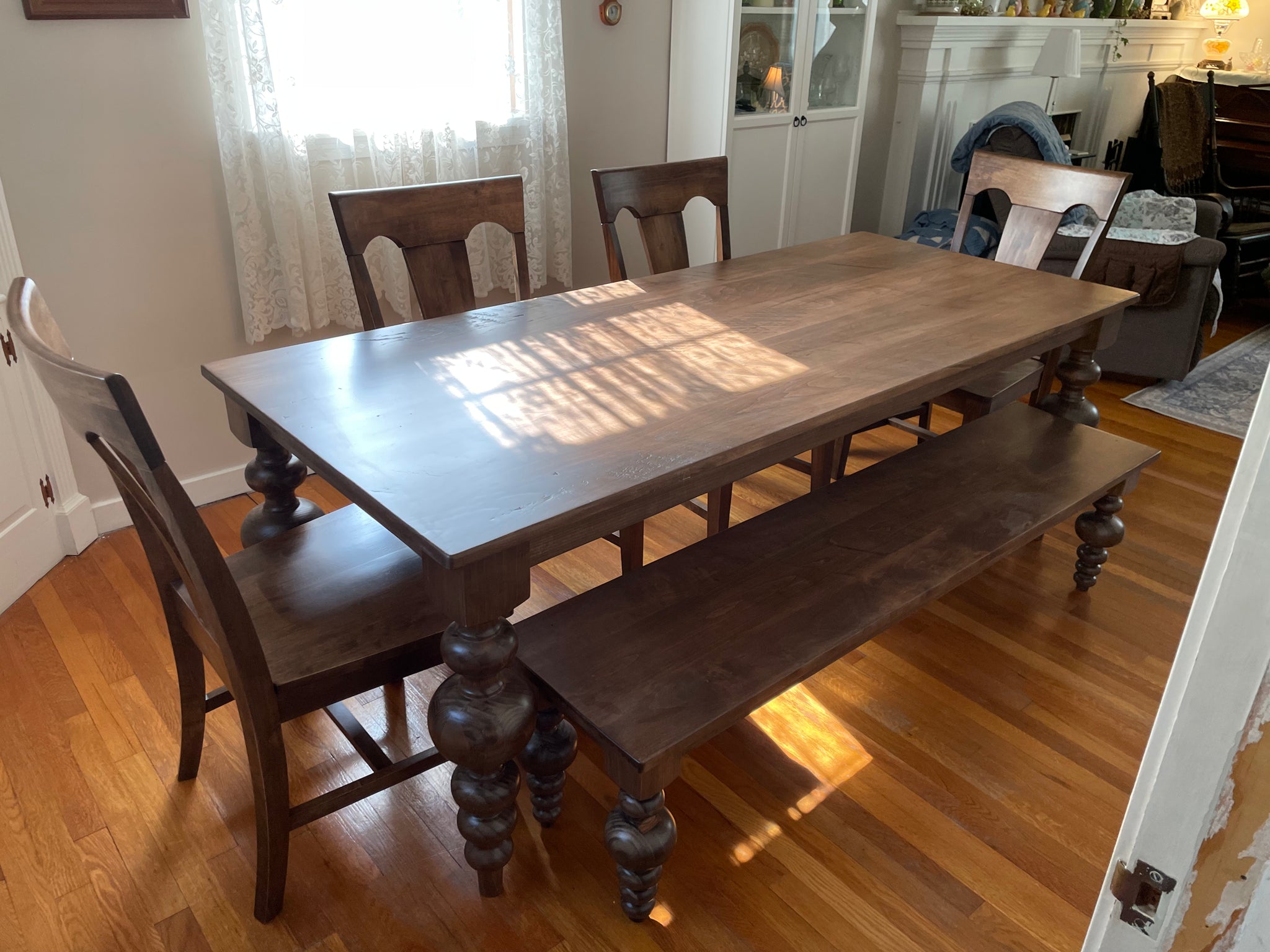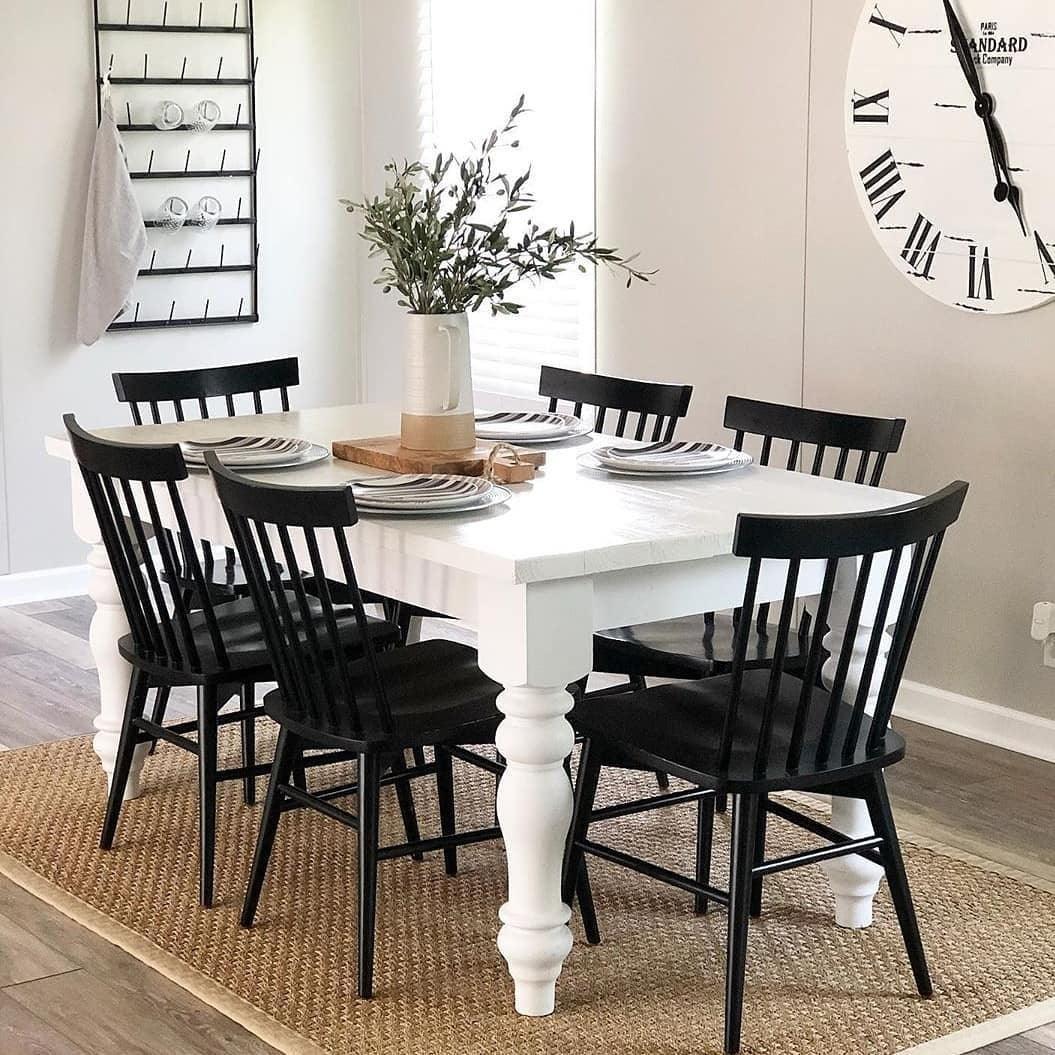Affordable and High-Quality Dining Room Table Legs for Every Budget
From Traditional to Modern: Discover the Suitable Eating Space Table Legs for Your Style
The choice of dining-room table legs plays a pivotal function in defining the overall personality of your space, connecting the space in between standard workmanship and contemporary aesthetic appeals. While timeless layouts such as cabriole and transformed legs evoke a sense of ageless refinement, contemporary styles like hairpin and geometric alternatives provide an opportunity for striking visual interest. Assessing the ideal balance in between these styles calls for a nuanced understanding of your existing decoration and individual taste. As you consider these elements, the inquiry stays: exactly how can you effortlessly incorporate these diverse leg designs to produce a harmonious dining experience?
Recognizing Table Leg Styles
The variety of dining space table leg designs can substantially affect both the aesthetic appeals and performance of the space. Each leg style adds special aesthetic components and useful features, dealing with diverse style preferences and use needs. Understanding these designs is essential for selecting the right table that aligns with your general interior layout vision.
For instance, conical legs use a clean, classic look that can improve an area's sophistication, while pedestal bases offer security and make best use of legroom, making them suitable for smaller sized areas. Hairpin legs, a characteristic of mid-century modern layout, introduce a commercial style, allowing for an airy, open feeling. Similarly, trestle legs evoke rustic charm, giving durable assistance and a sense of eternity.
Furthermore, the selection of materials plays a substantial role. Wooden legs can bring heat and texture, whereas metal alternatives usually share a sleek, contemporary ambiance. Eventually, recognizing table leg styles is essential for developing a natural eating area that mirrors personal design while ensuring functionality and convenience. By attentively thinking about these aspects, you can improve both the functional and visual charm of your dining space.
Conventional Table Leg Options
When choosing dining room table legs, standard alternatives often personify classic elegance and craftsmanship. These styles mirror an abundant heritage and a dedication to high quality, making them optimal for those that appreciate timeless visual appeals.
One of the most renowned typical leg designs is the cabriole leg, characterized by its graceful rounded form. This design frequently features attractive makings and is most typically located in Queen Anne and Chippendale furniture. Another prominent alternative is the turned leg, which flaunts a series of smooth, rounded shapes that supply a classic look while maintaining security.
Additionally, the straight leg, while straightforward, offers a basic and sturdy framework that can blend flawlessly with a variety of tabletop styles. For those drawn to ornate detailing, claw-and-ball feet legs evoke a feeling of grandeur and can function as a stunning prime focus in any eating space.
Last but not least, stand bases, although not purely legs, give an alternative traditional choice that enables enough legroom and can be perfectly carved. Each of these typical leg styles adds to the general setting of a dining area, weding feature with visual allure.

Modern Table Leg Designs
Modern table leg designs provide a diverse variety of designs that highlight cutting-edge products and tidy lines. These styles often prioritize functionality while offering as striking focal factors within a dining area. Minimal appearances are widespread, with legs crafted from products such as metal, glass, and crafted wood, which add to a modern and ventilated feel.
One prominent style is the barrette leg, characterized by its slender, conical structure that offers stability without try these out frustrating the table top (dining room table legs). This style is usually found in mid-century contemporary furniture and can effortlessly complement numerous eating table shapes. Another fad is the usage of geometric forms, where legs may tackle unbalanced or angular kinds, adding visual rate of interest and a touch of virtuosity

Mixing Designs for One-of-a-kind Rooms
Frequently, house owners look for to produce one-of-a-kind eating rooms that mirror their individual design by blending various style elements. This technique permits for the unification of varied aesthetics, resulting in a harmonious yet distinctive environment. For instance, pairing a rustic wooden table with streamlined, modern metal legs can develop a distinctive comparison that elevates the room's general allure.
In addition, incorporating vintage table legs with modern tabletops can evoke a feeling find more of history while keeping a contemporary sensibility. Such combinations not only showcase individual taste yet likewise motivate imagination, enabling property owners to curate a space that really feels both individual and welcoming.
Shade plays an important duty in this blending procedure; picking table legs that match or contrast with the existing color pattern can enhance aesthetic interest. Whitewashed legs can soften the boldness of a dark table surface area, producing a well balanced visual.
Tips for Picking the Right Legs
Picking the right table legs is essential for achieving both capability and aesthetic appeal in your eating space. Begin by considering the general design of your room. Traditional settings gain from legs that include intricate makings or transformed styles, while contemporary areas may require smooth, minimal designs.
Following, evaluate the elevation and stability of the legs. dining room table legs. Typical table range between 28 to 30 inches in elevation, so ensure the legs match this measurement for convenience. Furthermore, durable products, such as hardwood or steel, can enhance security and longevity
Evaluate the leg form as well-- options consist of directly, tapered, or stand layouts. Straight legs provide a timeless appearance, while conical legs can include a touch of beauty. Pedestal bases give ample legroom and are suitable for smaller sized spaces.
Final Thought
In recap, picking the perfect eating area table legs requires cautious factor to consider of both traditional and contemporary styles. By harmonizing leg design, height, and material with the total decor, a natural and welcoming environment can be accomplished.
The selection of eating room table leg designs can significantly affect both the aesthetic appeals and capability of the space. Ultimately, understanding table leg designs is necessary for developing a natural eating area that mirrors individual design while guaranteeing practicality and comfort.One of the most iconic standard leg styles is the cabriole leg, characterized by its graceful Clicking Here rounded form. Straight legs use a classic appearance, while tapered legs can include a touch of elegance.In summary, picking the excellent eating space table legs calls for mindful consideration of both traditional and modern designs.